Table of Contents
ToggleLoguytren problems might sound like a quirky term from a sci-fi novel, but they’re very real and can be quite the headache. Imagine trying to solve a puzzle where the pieces don’t quite fit. That’s what dealing with loguytren issues feels like. Whether it’s a pesky technical glitch or a puzzling logistical challenge, these problems can throw a wrench in the smooth operation of any project.
But fear not! Understanding loguytren problems is the first step toward conquering them. With a bit of insight and a sprinkle of humor, tackling these issues can become less daunting and more like a fun game. So, grab your thinking cap and get ready to dive into the world of loguytren problems—where solutions are waiting to be discovered and laughter is the best tool in your arsenal.
Understanding Loguytren Problems
Loguytren problems refer to specific challenges that arise during project execution. Grasping these issues serves as a vital step toward effective resolution.
Definition and Overview
Loguytren problems manifest as obstacles hindering project progress. These complications can disrupt workflows and lead to inefficiencies. Often characterized by misalignment in project components, they require strategic analysis to identify root causes. Proper recognition of these challenges helps prioritize solutions that restore operational flow. Clarity in definition enables stakeholders to approach issues more effectively, transforming obstacles into achievable tasks.
Common Causes
Several factors contribute to loguytren problems. Poor communication among team members often leads to misunderstandings. Insufficient planning creates gaps in coordination, resulting in delays. Inadequate resource allocation can exacerbate these issues, limiting available support for critical tasks. Lack of clear objectives may also complicate project focus, causing further discrepancies. Identifying these common causes helps teams develop preventive measures to minimize future occurrences.
Symptoms of Loguytren Problems

Recognizing symptoms of loguytren problems aids in swift intervention. Early detection leads to a more effective resolution process.
Early Signs
Noticing subtle changes in project dynamics often signals loguytren problems. Team members may exhibit increased frustration or confusion over tasks. Miscommunication surfaces when team members provide inconsistent updates. Deadlines might not align, resulting in delays that disrupt workflows. Early signs provide crucial insights into potential misalignments. Any shifts in team morale or sudden drops in productivity warrant attention.
Advanced Symptoms
Advanced symptoms manifest as more serious disruptions within a project. Teams experience heightened stress as project goals seem increasingly unattainable. Increased turnover rates can indicate deeper issues that stem from these problems. Quality of work diminishes when resources become strained or misallocated. In severe cases, the project may suffer significant loss of momentum, compromising overall objectives. Monitoring these advanced indicators allows teams to address root causes effectively.
Diagnosing Loguytren Problems
Diagnosing loguytren problems requires a systematic approach to identify underlying issues. Early assessment can greatly aid in addressing these challenges effectively.
Medical Evaluation
Medical evaluation plays a crucial role in diagnosing loguytren problems. Physicians often conduct comprehensive interviews to gather information about symptoms and medical history. Physical examinations may help identify specific issues in project dynamics. Observations regarding team interactions and workflows provide valuable insights. Feedback from team members also aids in forming a complete understanding of the situation. This evaluation phase is essential for pinpointing misalignment among project components.
Diagnostic Tests
Diagnostic tests offer further clarity in identifying loguytren problems. Standard assessments might include surveys that measure team communication and collaboration. Project management tools can analyze workflow patterns and highlight bottlenecks. Data analytics provide insights into resource allocation and task completion timelines. Software applications often track team performance and identify recurring issues. These tests assist in quantifying problems and establishing a targeted strategy for resolution.
Treatment Options for Loguytren Problems
Loguytren problems require targeted treatment strategies for effective management. Options include both non-surgical and surgical interventions tailored to individual needs.
Non-Surgical Treatments
Non-surgical treatments primarily focus on alleviating symptoms and restoring project flow. Physical therapy often helps improve flexibility and mobility among team members. These sessions emphasize exercises designed to enhance communication and collaboration. Injections of corticosteroids may reduce inflammation and discomfort, promoting a more efficient workflow. Additionally, splinting can stabilize communication channels among team members, preventing further misalignment. Team workshops lead by experienced facilitators can also foster better understanding and relationships, addressing root causes directly. Such approaches provide immediate relief and support long-term success through skill development.
Surgical Interventions
Surgical interventions become necessary when non-surgical methods fail to provide adequate relief or restore functionality. Fasciotomy serves as a common procedure, allowing for direct access to affected components. This intervention realigns project elements, improving overall dynamics. Another option is tendon transfer, which reroutes communication pathways within the project framework. Surgeons often tailor these procedures based on the severity and specifics of the loguytren problems. Understanding the outcomes and risks associated with surgical options aids teams in making informed decisions. Proper post-surgical care, including therapy and follow-up assessments, ensures effective adjustments for continued progress and success.
Managing Life with Loguytren Problems
Managing loguytren problems requires proactive strategies to support individuals and teams. By implementing lifestyle adjustments, one can significantly improve overall project dynamics.
Lifestyle Adjustments
Incorporating regular breaks during work hours helps reduce stress and foster creativity. Establishing a structured daily routine enhances focus and productivity among team members. Adjusting expectations based on available resources promotes realistic goal setting. Utilizing project management tools allows better visibility of tasks and responsibilities, ensuring alignment across team members. Practicing open communication strengthens relationships, making it easier to share concerns and solutions. These lifestyle modifications create a more adaptable environment, enabling teams to navigate loguytren problems effectively.
Support Resources
Accessing support resources can bolster efforts in managing loguytren problems. Engaging with project management software provides valuable insights into workflow patterns and team performance. Participating in professional development workshops equips team members with strategies for effective communication and problem-solving. Seeking mentorship from experienced project managers offers additional perspectives on overcoming challenges. Joining online forums or local networks fosters community support, allowing teams to exchange ideas and solutions. Utilizing these resources enhances the collective ability to address loguytren problems, promoting resilience and progress in project operations.
Addressing loguytren problems requires a proactive mindset and a willingness to adapt. By fostering open communication and implementing structured routines teams can significantly reduce the impact of these obstacles. Utilizing project management tools and seeking support resources enhances visibility and alignment among team members.
The journey to overcome loguytren problems may be challenging but it’s also an opportunity for growth and innovation. With the right strategies in place teams can transform frustrations into solutions that drive project success. Embracing this process not only improves operational flow but also strengthens team dynamics and resilience.






